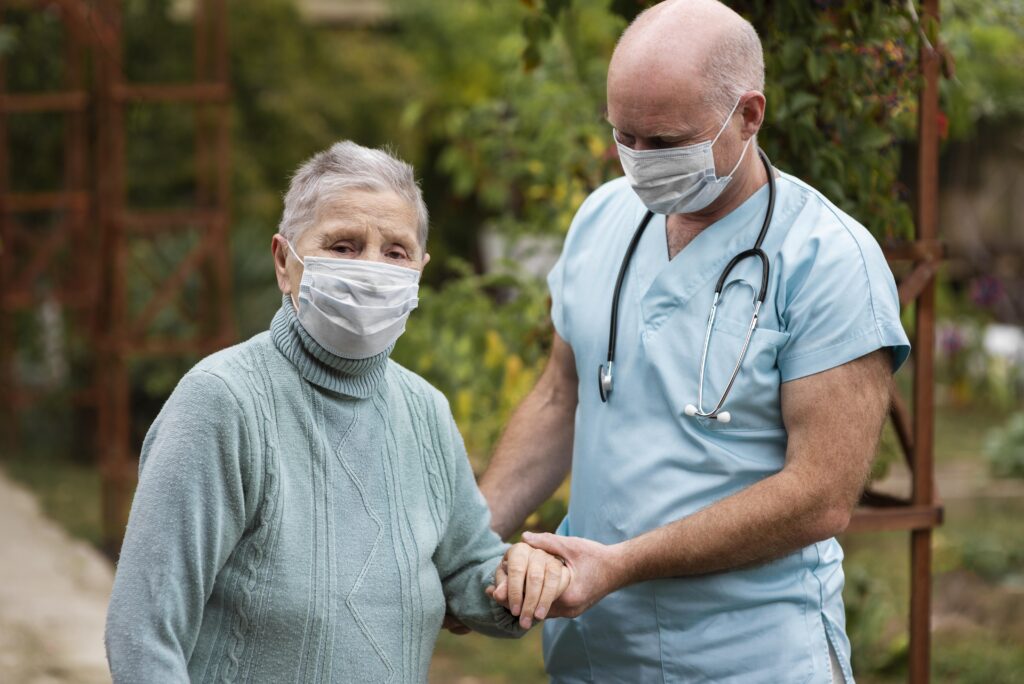A huge rural health fund just became real. It’s $50B over 5 years (FY26–FY30), with $10B/year and a single, one-time application. States submit once; CMS announces awards by December 31, 2025.
If you lead an FQHC, HCCN/PCA, or a public health team, your state is already sketching its plan. The question is whether your projects make the cut.
What You Need to Know
- Who applies: Only states (not DC or territories). States can subaward to partners—FQHCs, public health agencies, hospitals, HIEs, universities.
- Money split: 50% equally to approved states; 50% allocated by CMS using factors like rural population and facility mix.
- No match; admin cap: No cost-share required; ≤10% of each state’s allotment can go to administrative costs (includes indirects).
- Deadline that matters: Nov 5, 2025 (11:59 p.m. ET). Optional LOI Sept 30. Applicant webinars were Sept 19 & 25—recordings available.
What CMS wants to buy
CMS lists five strategic goals and a menu of uses of funds. You must line up with at least three (states choose; you supply the proof). Highlights you can build around: prevention/chronic disease, workforce, innovative care models (including value-based), and tech innovation—interoperability, data sharing, cybersecurity, telehealth/RPM, and AI where appropriate.
Important guardrail: Funds can’t duplicate/supplant other program dollars (e.g., paying for services already covered by Medicaid/Medicare/HRSA). Budget narratives must show how you avoid duplication.
Who’s “in scope” on the ground
States will route dollars to rural health facilities broadly defined—FQHCs, RHCs, CCBHCs, CMHCs, rural and reclassified hospitals, REHs, and more. (Some facility types can qualify even if not physically rural, per statute/NOFO.) Read that again if you run a community health network.
If you run an FQHC/HCCN/PCA: get “proposal-ready”
Keep it simple and specific.
- Pick 2–3 projects you can stand up fast (24–36 months). Name counties/communities, target populations, baselines, and outcomes. Map each project to ≥3 uses of funds and to the five CMS goals.
- Prove the data path. Identify sources (EHR/UDS/claims/HIE), exchange partners, and the reports you’ll ship to the state. Include privacy, access, logging, backup, and cybersecurity controls.
- Show no duplication. State explicitly what not to bill with RHT dollars and how you’ll keep admin ≤10% if you receive subawards.
If you’re a state/local public health leader: set the runway
- Name the lead & coalition. Document the governor-designated lead agency and your cross-program group (Medicaid, Rural Health Office, behavioral health, maternal/child health, epidemiology).
- Publish subaward rules early. Who’s eligible, by what criteria, and on what timetable? CMS expects clarity on methods and selection.
- Lock the attachments. Governor’s letter (up to 4 pages), program duplication assessment (5), business assessment (12), and a tight budget narrative showing the ≤10% admin math.
Where tech makes a difference
- High-value: Interop/HIE event notifications, cross-entity data models, registries, broadband-sensitive telehealth/RPM, security uplift, and analytics tied to prevention and ED diversion. These sit squarely in “tech innovation” and “sustainable access.”
- Low-value: Anything that looks like replacing payer-covered services or padding overhead. CMS spelled out the duplication test; don’t give reviewers a reason to cut.
Timeline you actually need to plan around
- Now → Sept 30, 2025: Optional LOI (use it to get on your state’s radar).
- Through Oct 2025: Incorporate the CMS webinars; finalize project narratives, budgets, and guardrail language.
- Nov 5, 2025: State application due. One shot for the entire 5-year program.
- Dec 31, 2025: CMS announces awards and earliest start date.
Bottom line
Don’t wait — the application window closes on November 5, 2025, and states must have their CMS awards in place by December 31, 2025. If your state or organization wants to position itself as a rural health transformation leader, reach out today.
This isn’t about writing a wish list. It’s about being ready with measurable projects that help your state check CMS’s boxes without crossing the duplication line. If you can hand the state a crisp, evidence-backed concept (outcomes, data plumbing, privacy/cyber, budget), you raise your odds of landing in the first wave of subawards.
How CureMD helps you
Whether you are a state health department, CHC, rural hospital, or health network, we can help you:
- Assess your readiness and build a winning RHT strategy
- Design and deploy interoperable, secure, scalable health IT
- Implement new care models with analytics, telehealth, and population health tools
- Support adoption, workforce training, and governance
- Ensure that every grant dollar is leveraged for long-term sustainability
Contact us now to schedule a readiness assessment or discuss how CureMD can support your journey from funding to impact. Let’s turn this opportunity into lasting change for rural communities.
Sources:
CMS Press Release (program launch; dates; structure).
CMS RHT Overview page (strategic goals, distribution, eligibility, timeline, webinars). Last updated Sept 26, 2025.
CMS NOFO (CMS-RHT-26-001) (official dates, LOI, webinars, no cost-share, uses of funds). CMS RHT FAQ (one-time application, admin ≤10%, no supplanting, subawards).
NRHA 2-page Summary (facility definitions and distribution synopsis).

Join the Discussion!